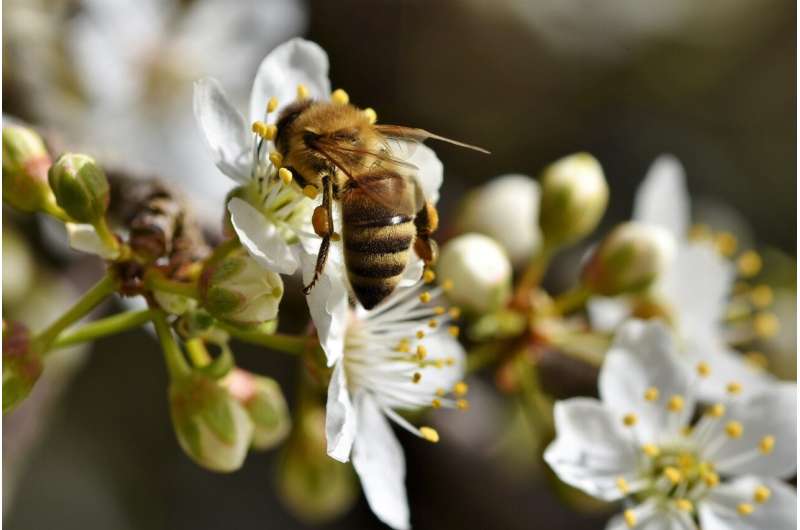
Image credit: Pixabay/CC0 Public Domain
A new collaborative study has found that bees are increasingly threatened due to environmental degradation resulting from land-use changes.
The researchers found that changes such as deforestation and urban development altered the floral availability in the landscape, thereby significantly affecting bee populations, particularly those with larger bodies.
Ecologists from the University of Western Australia, the University of Canterbury in New Zealand and the CSIRO investigated how the availability of floral energy resources in the landscape affected bee populations in 23 Banksia forest fragments in Western Australia.
The researchers found that flowers in the surrounding bushland areas are crucial for the survival of bees in the remaining forests. The study was published in the Proceedings of the Royal Society B: Biological Sciences.
Dr Juliana Pille Arnold, who led the study as a PhD student at UWA, said the research findings underlined that floral energy resources in the surrounding landscape, the so-called ‘matrix’, played a critical role in supporting bee populations in fragmented habitats.
“We have collected extensive data on bee populations, their interactions with plants, flower density in different land uses and the energy content of nectar and pollen of the flowers they visit,” said Dr. Pille Arnold.
“Bees rely entirely on nectar and pollen for their nutrition and their reproductive ability is greatly influenced by the availability of food.
“We found that both small and large bees thrive in forest remnants when the surrounding landscape contains more of their preferred flowers. However, larger bees, which require more energy, are particularly vulnerable to limited food resources.
“Natural habitats are being replaced at an alarming rate, while only small fragments of the once contiguous Banksia forest remain scattered across the landscape. Therefore, managing the matrix surrounding the forests is essential to connect the remaining vegetation and mitigate impacts on bees and other pollinators.”
Study co-author Professor Raphael Didham from UWA’s School of Biological Sciences said the findings showed that conservation planning needed to take into account the quality of the surrounding landscape to help protect bee populations in natural habitats.
“Our research has shown that the surrounding landscape plays a critical role in supporting bee populations and provides valuable insights for policy makers,” said Professor Didham.
“It is clear that conservation efforts need to go beyond protecting isolated habitats and should consider the wider landscape context. Protecting remaining bushlands, restoring natural habitats and planting native plants in gardens, green spaces and parks are all activities that could help support bees and their pollination services.”
Further information:
Juliana Pille Arnold et al., Body size-dependent effects of landscape-level resource energetics on pollinator abundance in forest remnants, Proceedings of the Royal Society B: Biological Sciences (2024). DOI: 10.1098/rspb.2023.2771
Provided by the University of Western Australia
Quote: Study shows land-use changes significantly affect larger bees (22 August 2024), accessed 22 August 2024 from https://phys.org/news/2024-08-significantly-affect-larger-bees.html
This document is subject to copyright. Except for the purposes of private study or research, no part of it may be reproduced without written permission. The contents are for information purposes only.

